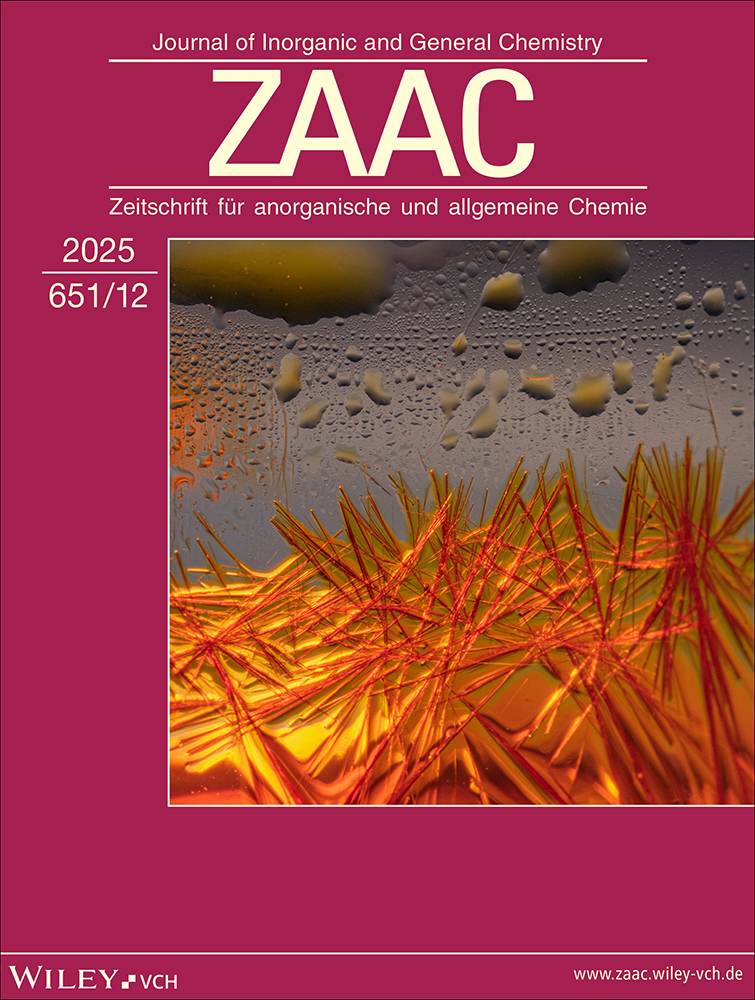Facile Synthesis and Molecular Structure of [Ni(PPh2NHPh)4]
Abstract
enNiCl2 · 6 H2O readily reacts with PPh2NHPh in the presence of zinc dust to yield the homoleptic nickel(0) tetrakis-phosphine complex [Ni(PPh2NHPh)4] (1). 1 crystallises triclinic P1 (no. 2), with a = 14.656(1), b = 17.124(2), c = 17.424(1) Å, α = 95.998(1), β = 111.845(1), γ = 111.402(1)°, V = 3630.04(5) Å3, Z = 2, R values [I > 2σ(I)]: R1 = 0.0554, all data: wR2 = 0.1720. The nickel atom is coordinated in a distorted tetrahedral fashion by four phosphorus atoms, resembling a compressed tetrahedron along one of the non-crystallographic S4 axes.
Abstract
deEinfache Synthese und Molekülstruktur von [Ni(PPh2NHPh)4]
NiCl2 · 6 H2O reagiert rasch mit PPh2NHPh in Gegenwart von Zinkstaub unter Bildung des homoleptischen Nickel(0)-tetrakis-phosphan Komplexes [Ni(PPh2NHPh)4] (1). 1 kristallisiert triklin in der Raumgruppe P1 (Nr. 2) mit den Gitterkonstanten a = 14,656(1), b = 17,124(2), c = 17,424(1) Å, α = 95,998(1), β = 111,845(1), γ = 111,402(1)°, V = 3630,04(5) Å3, Z = 2, R-Werte [I > 2σ(I)]: R1 = 0,0554, alle Daten: wR2 = 0,1720. Das Nickelatom ist verzerrt tetraedrisch durch vier Phosphoratome koordiniert. Das Molekül bildet einen entlang einer der nicht-kristallographischen S4-Achsen gestauchten Tetraeder.




